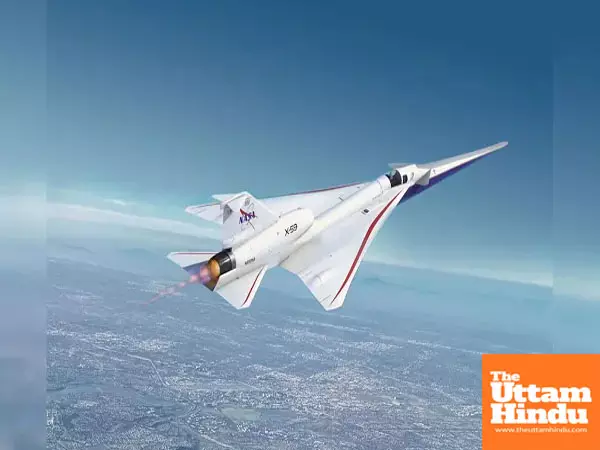US breakthrough: X-59 Supersonic jet shatters speed records, covering 1508 km in just 1 hour

WASHINGTON (The Uttam Hindu) : The United States has taken a historic step toward the future of air travel. The US space agency NASA and Lockheed Martin surprised the world with the successful first flight of the X-59 supersonic aircraft, jointly developed by them. Most notably, this aircraft is capable of flying faster than the speed of sound, yet produces no explosions or loud noises.
The 'plane of the future' was seen in the skies of California
The first test flight was carried out from Palmdale, a desert area of California. NASA's chief pilot Niels Larsen took off at 8:14 am and landed it safely at NASA Armstrong Flight Research Center (Edwards Base) after about 30 minutes. During this, the plane successfully met all the technical parameters while flying at subsonic speed (less than the speed of sound). As soon as the plane touched the ground, there was an atmosphere of applause and excitement in the entire base.
What is the X-59's most significant feature?
Developed by NASA and Lockheed Martin, this aircraft is part of the 'Quiet Supersonic Technology' (QueSST Project). Its primary goal is to eliminate the sonic boom. While typical supersonic jets produce noise levels of 110–140 decibels, the X-59 produces only a gentle 60–80 decibel "thump" sound, similar to a car door closing. This is possible due to its special aerodynamic design and fuselage geometry.
Capable of covering 1500 kilometers in an hour
* This single-seater aircraft can fly at a speed of Mach 1.4 (about 1508 km/h).
* It is 99 feet long and has a wingspan of 29 feet.
* It is powered by GE F414 engines – the same engines that are also installed in the US Navy's advanced fighter jets.
* NASA has invested about $500 million in this project.
* US Transportation Secretary Pete Buttigieg said, "This project not only demonstrates America's technological superiority, but will also reshape air travel."
NASA's goal is to reopen supersonic flights
NASA aims to lift the ban on overland supersonic flights that has been in place since the 1970s. To this end, the X-59 will conduct test flights over communities in the coming years, measuring public reaction and noise levels. If results are favorable, new regulations for supersonic commercial flights could be enacted by 2027–2028. This technology could pave the way for the return of fast aircraft like the Concorde in the future—but this time in a quieter, safer, and more environmentally friendly manner.
